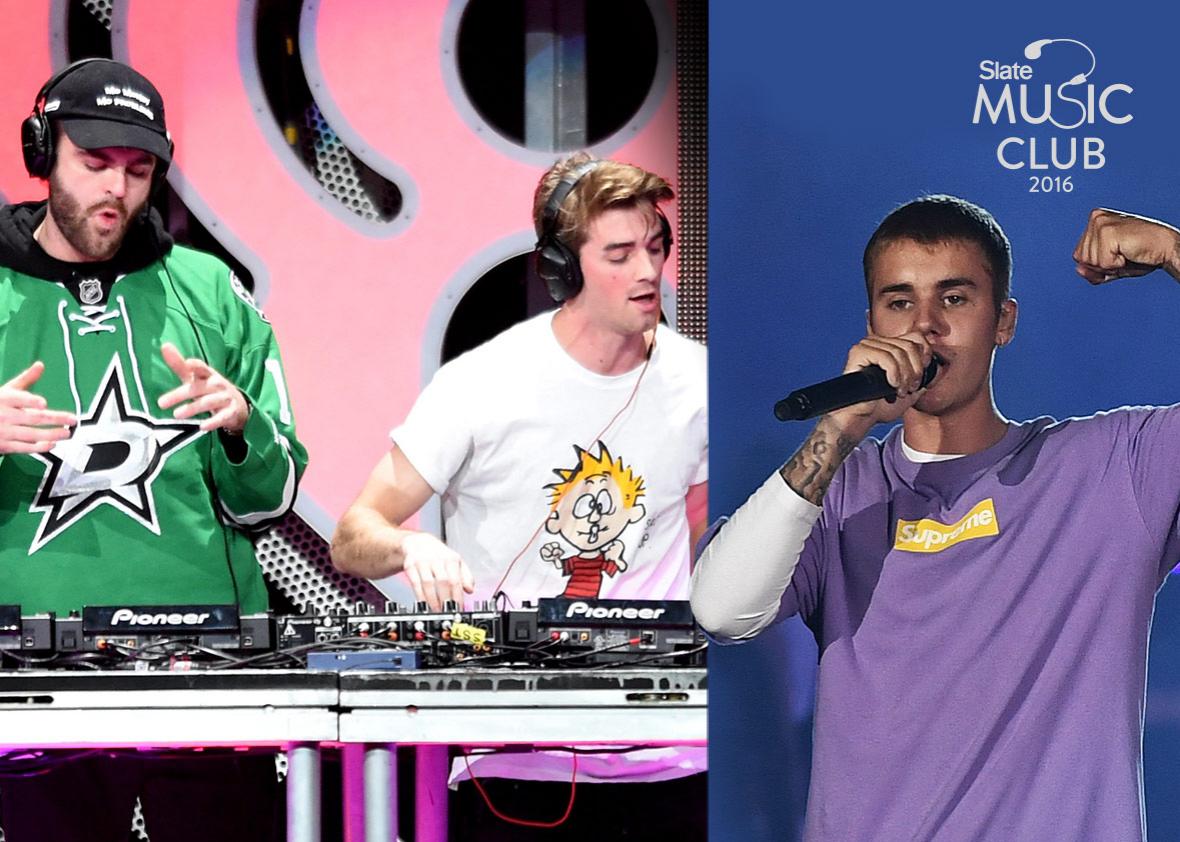Comrades!
Ann, thank you for bringing up Ghost Ship, where I presume all of our hearts have been for the past few weeks. In addition to the beautiful souls you mention who were lost, I’ve been listening to and thinking about Chelsea Faith Dolan, whose music as Cherushii was some of the most layered, beautiful, and technically proficient house I’ve heard in years. Depressingly, I didn’t know her music while she was alive, including the work she cut with her best friend—the better known fellow producer Maria Minerva—who published the most clear-cut video on underground venues while waiting to hear of Chelsea’s fate.
My too-late discovery of Dolan was another reminder of how even the most brilliant producers and DJs in dance music are marginalized if they’re women. I feel I say this every year, but in this pussy-grabbing epoch, the sexism seemed to trickle down. This year saw visceral garage from Flava D, industrial agit-pop from Fatima Al Qadiri, immersive ambience from Kaitlyn Aurelia Smith and Suzanne Ciani, and the jaunty, Miami-informed debut from Jubilee. In stark philosophical contrast, the most celebrated song in America was that profoundly lightweight, garbage-sounding negging anthem by the Chainsmokers, who apparently couldn’t turn off their championing critics even after that Billboard profile confirmed their virality was based in virulent misogyny. I know this sounds like an extremely ’90s complaint about pop vs. underground, but I don’t necessarily mean it to be. (Even in the underground, women DJs and producers have a difficult time with being taken seriously.) I just mean that the two extreme examples really illustrate what audiences valued this year. We are having a culture war, after all!
While I’m grousing, though, let me return this conversation to that other hit, Drake’s “One Dance,” which resurrected an eight-year-old U.K. funky house track and, via Wizkid, linked it to the realm of Afrobeat, a genre that’s had a huge year. The song in itself, which I grew to tolerate, served as a macrocosm of the way pop stars continued to derive inspiration from highly specific local communities but for the most part divorce all cultural meaning. At least Drake, with his perpetual and extremely hilarious fake patois, could claim a connection. The ongoing chart-jacking of “tropical house” and lack of recognition for the reggaetón, dembow, and dancehall artists who innovate those genres continued to rankle, but in the year America’s hatred for immigrants and blacks and Latinxs in particular, it took on another meaning—rich and famous white people like the Biebs revamping his career on the backs of relatively invisible people of color.
For a devastating 12 months of fear and worry for my family, my friends, and myself—and the year when 49 people, mostly Latinx and queer, were murdered at Pulse nightclub—I felt ever more acutely that the dance floor was a sacred space. The most thrilling night I experienced this year was not Dizzee Rascal’s anniversary performance of Boy in Da Corner in its entirety but the afterparty for it, led by London grime innovators Elijah & Skilliam and Brooklyn’s Star Eyes, another female producer/DJ who has been leading the charge in underground dance music since she was a teenager playing raves in the Bay. (Also, shoutout to Alfie Allen, who was there at the club; far be it from me to presume Theon Greyjoy doesn’t love grime.) It was held at the underground venue Palisades, which was shut down in May, supposedly for lacking a cabaret license, sprinkler system, or second exit. As you point out, Ann, marginalized music simply cannot sustain itself without the proper support, and the way the underground is increasingly being pushed out into the margins is a symptom of locality itself being marginalized. The uncomfortable position we find ourselves in as Americans reject globalism (mainly its best, one-world ideals) for isolationism is that in doing so, communities are being squashed.
But weighing my other two favorite live shows of 2016 brings that dichotomy into focus. Hitmonster Garth Brooks at Yankee Stadium was wholly epic, and the show visually approached performance art in the way he pantomimed his very real patriotism by projecting horses racing through fields among majestic American flags; in another world, he could have been included in the Whitney Museum’s excellent and rightfully acclaimed “Dreamlands” exhibit. And the young grime superstar Stormzy dazzled a crowd full of British expats on a sweaty, damp night in March at Brooklyn’s Market Hotel, a larger indie venue that was still too small for him. It’s a tertiary concern at best on the scale of things to fear about the incoming administration, but what will a Trump presidency mean for international touring musicians? Will the U.S. become yet another country to be boycotted, if it’s even still possible for musicians to procure international visas at all? The U.K. is reckoning with this topic after Brexit; the costliness and paperwork headache of traveling to individual countries in the European Union doesn’t bode well for the health of the worldwide underground, and I fear we’re in for it, too.
Young(ish!), Latin, and proud,
Julianne
10 more songs:
16. Domo Genesis ft. Anderson .Paak, “Dapper”
17. Princess Nokia, “Brujas”
18. Nicki Minaj, “Black Barbies”
19. Solange, “Rise”
20. Abra, “Crybaby”
21. AWE, “Club Week”
22. Lunice, “Look Like”
23. SUS4, “Pick Me Up”
24. Khary, “Find Me”
25. Kiiara “Gold”
